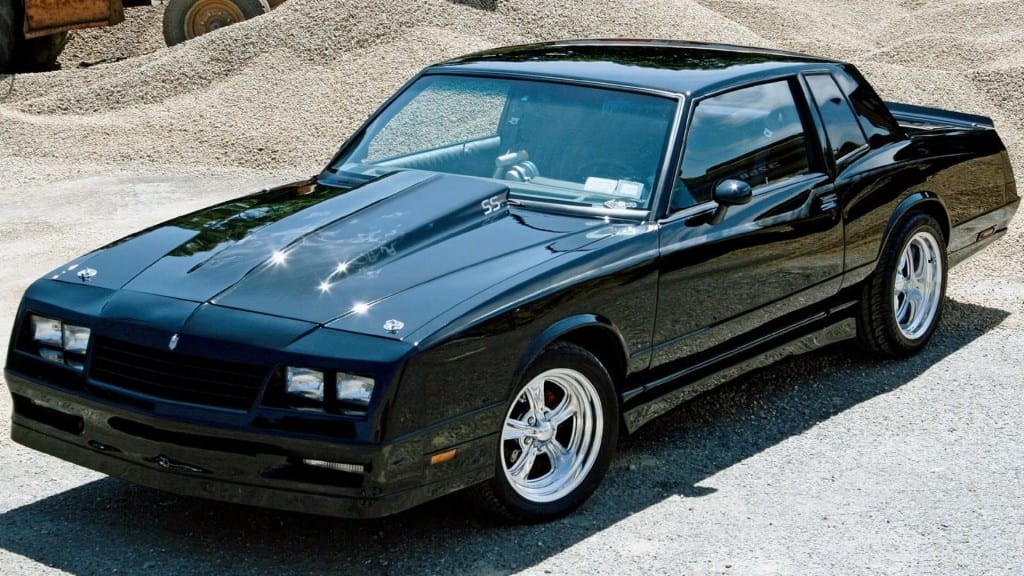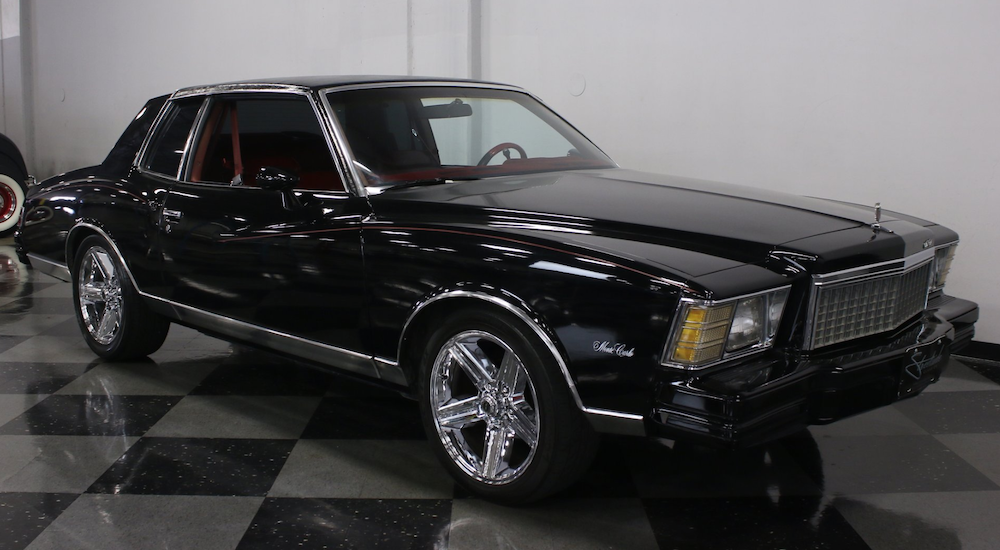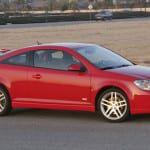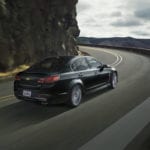The Chevrolet Monte Carlo has a long history, but you won’t see many of these on the road anymore. Six generations of the Monte Carlo have been produced since 1970, but the line was discontinued in 2007. There was also a hiatus in production from 1988 to 1995.
That’s a shame because the Monte Carlo was a beautiful car with great performance. The two-door coupe was marketed as a personal luxury vehicle, and it went through a design evolution that ranged from classic muscle car to sleek, modern sedan.
The Chevrolet Monte Carlo SS — or “Super Sport” — was a performance version that was available for the first two years of the Monte Carlo’s run and then again from 1983 to 1988 and 2000 to 2007. The SS was more powerful and sporty than the base model, and it some cases, it featured design updates.
If you shop used Chevy dealerships, you can still find some late model Monte Carlo SS options that will serve you reliably for many years to come. If you get really lucky, you might even still be able to find some of the older models for a restoration project or to have as a classic collectible.
Here’s a look back at the history of the Monte Carlo SS and what it had to offer:
First Generation
Chevrolet introduced an SS version alongside the very first Monte Carlo in 1970. The optional package included a 7.4-liter Turbo-Jet 454 V8 engine that put out 360 horse power, which was exceptional for the time. Many of today’s sedans and coupes don’t have that much power under the hood. The engine was paired with a three-speed automatic transmission.
The first SS model also came with heavy-duty suspension, automatic load-leveling suspension and wider tires to handle the more powerful performance. Buyers could further tweak the package by adding a rear-axle ratio of 2.56 or 3.31 (compared with the standard 3.06 ratio).
The SS package cost an extra $420 over the base price of $3,123 for the Monte Carlo. These days, you couldn’t pay less than $4,000 for most cars and expect them to still run. Still, sales of the SS package were overall very low, coming in at 3,823 units.
The following year, sales were even worse, with only 1,919 units moving from Chevy dealerships. The Turbo-Jet 454 engine would still be available as an option for Monte Carlo models until 1975, but it would not be included as part of an official SS package.
Another reason that Chevrolet discontinued the SS package was that it wanted to focus on promoting the Monte Carlo as a luxury car and not a performance car. Even with that decision, the Monte Carlo slowly gained a reputation for its exceptional performance, eventually taking a place on NASCAR tracks from 1971 to 1989.
A Monte Carlo “Custom” option was offered in 1972 for one year only, and it was basically a repackaging of SS features. Those who purchased the Custom package could get enhanced suspension and any engine available in the lineup, which included the Turbo-Jet 454.
Fourth Generation
The fourth generation of the Monte Carlo was introduced in 1981, but the SS would not make a reappearance until 1983.
That year, the Monte Carlo received some minor design updates, such as a new grille and new interior trim. The SS model featured an entirely new front fascia, a new rear spoiler, European body color-coding and a 305 CID V8 engine that put out 180 horse power.
The SS was reintroduced each year through 1988, which marked the end of the fourth generation and a hiatus for the Monte Carlo until 1995.
Only 168 models of the SS were produced in 1984, and the car featured the same engine as the previous year’s model. Three cars produced at the end of the year received a special Turbo Hydramatic 200-R4 transmission with overdrive.
A limited number of SS models were also introduced in Mexico that year, including numerous changes. The Mexican SS models did not have a rear spoiler, they had uniquely styled side mirrors, they featured a blue interior, and they had a four-speed manual transmission.
The following year, the SS came with the same HO V8 engine but was only offered with a four-speed automatic transmission. While it remained relatively unchanged under the hood, the SS received many styling changes that year that differentiated it from the base model Monte Carlo, including new exterior paint choices, a sway bar, and removable glass roof panels. Sales of the SS soared that year.
In 1986, the SS Aerocoupe was introduced alongside the SS. The Aerocoupe featured a shorter trunk, a flat rear spoiler, a steeper rear window and other design changes. Only 200 models were sold that year, but the number jumped to just over 6,000 the following year. It was not reintroduced in 1988, which was the final year for the SS before the break.
Sixth Generation
The Monte Carlo came back for a fifth generation in 1995, but the SS wasn’t reintroduced until the sixth generation in 2000. The new SS came with a 3.8-liter L36 V6 engine that put out 200 horse power and 225 pounds per feet of torque.
For 2004 and 2005 models, a supercharged version of the engine was available that put out 240 horse power and 280 pounds per feet of torque. For those two years, the standard SS package was remarketed as the LT.
Several specialty models were produced during the final run of the Monte Carlo, and they were all SS versions. The Dale Earnhardt Intimidator Edition was released in 2002, and it featured unique design touches like Earnhardt’s Number 3 logo behind the rear windows, special badging on the side of the trunk and bottom of the body, and interior badging. Two unique exterior paint designs were available, and the interior was all-black leather. The car came with a L36 3800 V6 engine.
The Jeff Gordon edition was released the following year and it included a blue body with silver ground effects and blue ghost flames. The same badging was included, but Gordon’s logo replaced Earnhardt’s (Gordon is Number 24). The interior was gray and black. The car had the same engine as the Earnhardt edition.
The Dale Earnhardt Jr. edition came out in 2004, and it was red with an “E” stripe design from the doors to the back bumper. The number 8 and Earnhardt Jr.’s signature were featured on the exterior, as well as SS badging. Under the hood was an L67 supercharged 3800 V6 engine.
A Tony Stewart edition was introduced in 2005, featuring a black exterior with an orange and white line running the length of the body. The number 20, Stewart’s signature and SS badging were also stamped on the exterior. The engine was the same as the Earnhardt Jr. edition.
The Monte Carlo and the SS had their final run in 2006 and 2007 after a slight redesign. The most notable change to the SS was the introduction of the generation IV small-block V8 engine, which put out 303 horse power. It was the first V8 to be used on the SS since 1988.
Though it has been nearly a decade since the last Monte Carlo or SS were produced, you can still find high-quality versions at used Chevy dealerships across the country.
Update 5/16/19
Addendum: 2nd Generation (1973-1977)
Chevy’s introduction of the 2nd-gen Monte Carlo for the 1973 model year proved an immediate success, setting an all-new sales record (almost 250,000 units sold) and recognition as Motor Trend’s ‘Car of the Year.’ High praise indeed, and the 73’ Monte Carlo inspired a number of other automakers to ‘up their game’ in terms of their midsize sedan offerings, and respective relationships with luxury-inspired styling. In other words, the evolving Monte Carlo (in both concept and execution) proved itself to be a legitimate game-changer.
Celebrated for its new focus on handling and ride quality, the Monte Carlo’s redesign spoke to refinement and more luxurious aesthetic without sacrificing ties to GM design philosophy of that time. For example, it was now a pillared coupe (as opposed to a hardtop) with modified window design including frameless door glass, and opera-style rear windows. The overall appearance was tied together by an updated grille design, and vertically restricted lights.
Climbing inside, drivers and passengers alike were welcomed by a wraparound instrument panel, evocative of a cockpit, but making all instruments and gauges easily visible and accessible. Available with either a split bench or high-back “Strato Bucket” seats with built-in headrests, the ’73 Monte Carlo helped to cement its own identity as a driver’s vehicle, with a clear effort made to cater to comfort and overall drivability.
But it was also a passenger’s car, with new features designed to encourage a more satisfying cabin experience and safety concerns of the time. The double-shell roof helped to enhance noise reduction, while Pliacell shock absorbers helps to minimize road noise. Inclusion of a new bumper design (in line with new Federal Safety Mandates for the 1973 model year) and anti-roll bars across all trim levels helped to make the Monte Carlo a safer vehicle. The clear amount of effort shown made it little surprise why this next-gen offering had received such accolades.
But accommodating performance certainly played a role in its popularity as well, with three engine configurations being served up. Arriving standard with a 350ci 5.7-liter Turbo-Fire V7, the Monte Carlo delivered 145 hp helping to appease those with more modest needs. Those numbers were bumped up thirty points by a secondary V8 equipped by a four-barrel carburetor, with a 245 hp 454ci Turbo-Jet V8 rounding out the available powertrains.
Bottom-line, the 1973 Monte Carlo set a grand tone for the five model years to come, with sales hitting some high points in spite of the Arab Oil Embargo and the industry’s push towards fuel-economy and the growing popularity of modestly-proportioned compacts and subcompacts. And while it would evolve to reflect changing demands related to both safety and the environment the Monte Carlo would see small adjustments made to its general aesthetic (at least through 1976).
1977 however would stand as a bit of an oddity. Pre-dating the introduction of the 3rd-gen Monte Carlo, the ’77 model year seems to abandon the look of its predecessor. Bigger. Heavier. Favoring a boxier and more angular front end with stacked headlights and a segmented grille, it would prove divisive (and an arguable low-point) in terms of the Monte Carlo’s design philosophy. And Chevy’s decision to abandon the 400ci V8 limited the land-bound whale of a vehicle to an ill-fitting 170hp. It was clearly time for a change.
Addendum: 3rd Generation (1978-1980)
After five years of dodging the ecological bullet fired by the oil embargo, Chevy finally decided to bite the proverbial bullet in their design of the 3rd-gen Monte Carlo back in 1978. Boasting up to an 800LB weight reduction and measuring 15-inches less in length, the entire Monte Carlo was redesigned in a manner that allowed for greater cabin and cargo space.
And in terms of general aesthetic, Chevy prudently offered their sins of 1977 up to the automotive gods, praying for both forgiveness and inspiration. The result was a tasteful balance, evocative of earlier 2nd-gen successes albeit with the boxier design that would prove so compelling (and dare we say, ‘iconic’) in the years to come. A (thankfully) restyled grille created a more opened impression, and less-sloping rear roofline gave the new Monte Carlo an air of contemporary confidence, as opposed to the jive swagger of its immediate predecessor.
All previous powertrains were abandoned, serving up the option of either a V6 (paired with either a three-speed manual or automatic transmission ) or V8 (with either four-speed manual or automatic). This marked the first reappearance of an optional four-speed manual gearbox since the 1971 model year.
For many enthusiasts (including my former roommate, who had acquired a hand-me-down Monte Carlo back in the late nineties) this would mark the beginning of the Monte Carlo’s Golden Age and, if we were put on the spot, we’d have to agree.
Addendum: 5th Generation (1995-1999)
If we had touted the late 3rd-gen and early 4th-gen as the Golden Age of the Monte Carlo, the 5th-gen offerings of the mid-to-late nineties were anything but. Granted they weren’t ‘1977 bad’ but they definitely represented a low point, conceptually. Bland and uninspired, the new Monte Carlo suffered the same slings and arrows as every other model that shared its platform. And thus, its glaring similarities to the Lumina, Grand Prix, Cutlass Supreme, Intrigue, Century, and Regal all but destroyed the last vestiges of identity that had inspired so many competitors two decades prior.
So, it’s no real surprise that production (and by default, demand) took a decisive downward turn. By 1999, sales of the Monte Carlo had dropped over 30% from the 1995 numbers. In fact, that downward trend would continue well into the next generation, but let’s not get ahead of ourselves or (as my grandmother used to say) “spoil the soup”.
At worst, the base LS trim found a 3.1-liter V6 under its hood, capable of 160 hp and 185 lb-ft of torque. At best, the Z34 variant came powered by a 3.8-liter V6 that wrangled 200 hp and 225 lb-ft of torque. But, I’m sorry. Even if this generation of the Monte Carlo enjoyed its time as a NASCAR pace car on the track, it just reeks of mediocrity – another midsize sedan in a decade where automakers seemed genuinely lost, in search of direction. And while some might argue that the Monte Carlo would fare better in some of the years leading up to its discontinuation in 2007, we’d have a hard time agreeing. As mentioned, the downward trend would continue with the next-gen numbers all but halving themselves – proving that a departure from the recognizable iconography of the classic Monte Carlo was pretty much the worst possible choice that Chevy could have made.
But let’s give it a go, and see what the sixth (and final) generation had to offer.






